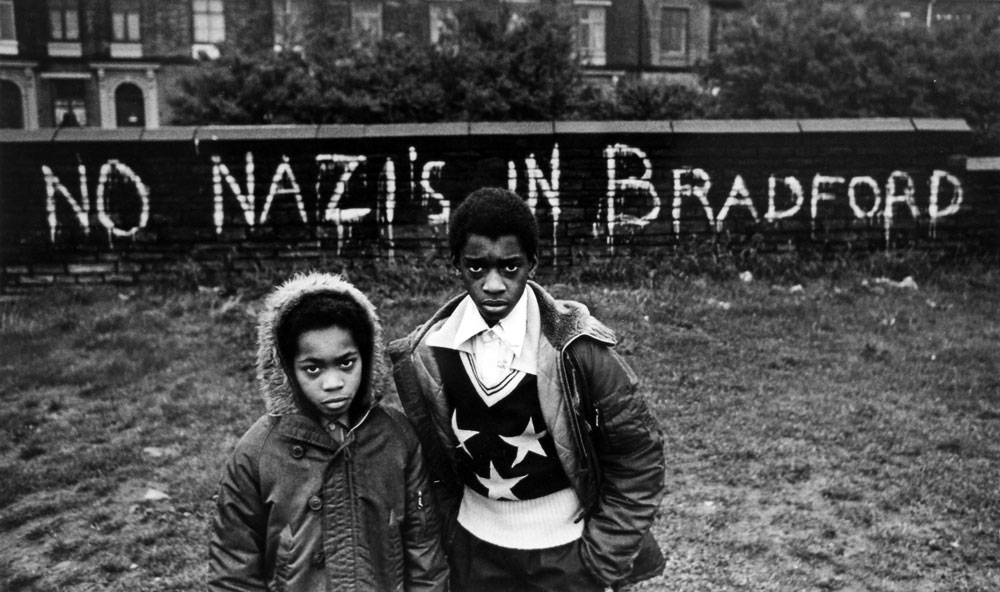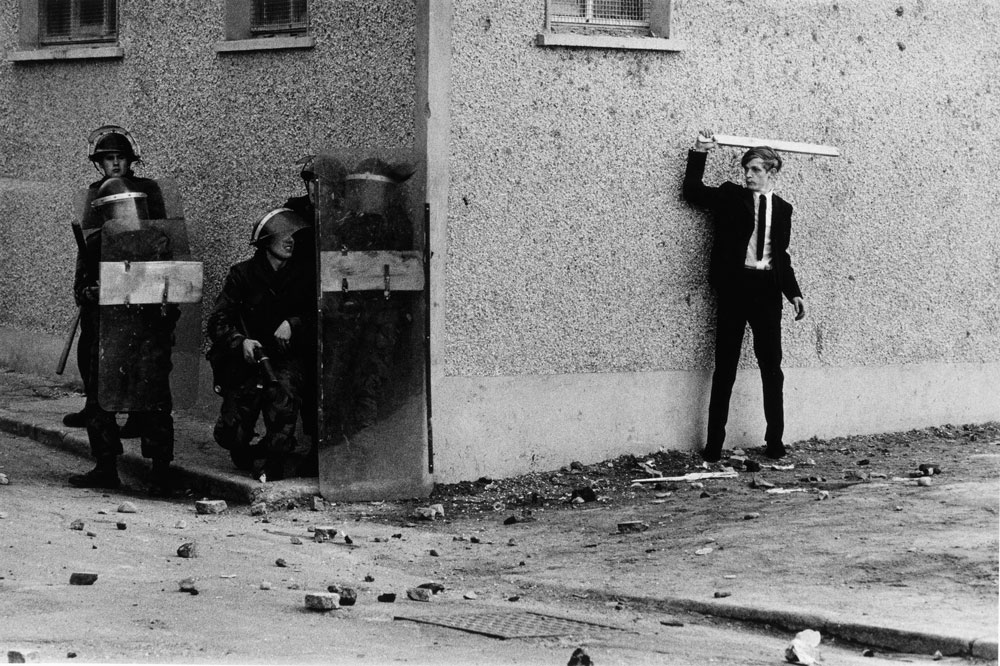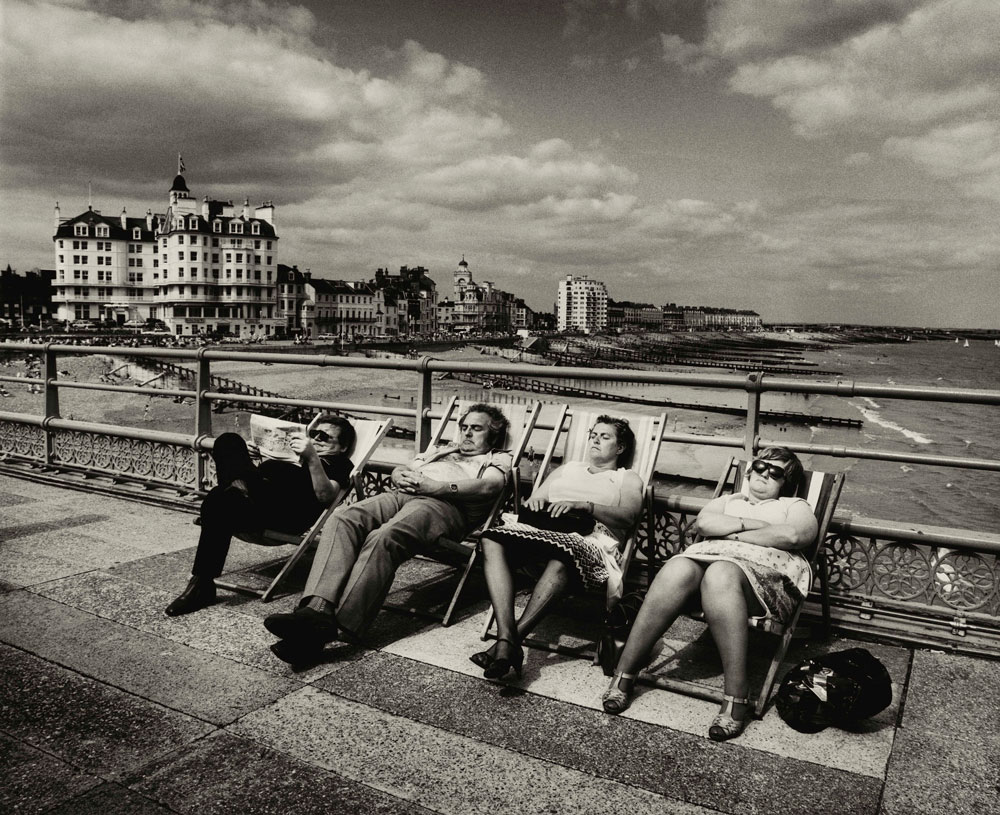PHOTO:Don McCullin
 In photojournalism the photographer is simply a witness on the sidelines, not involved with what is taking place in front of his camera, but not so with a war photographer, since he must inevitably be a part of the action taking the same risks and needing the same courage as the soldiers he photographs. Donald “Don” McCullin is one of history’s great war photographers. His interest in photography was sparked during his national service (1953-1955), when he served as a photographic assistant in aerial reconnaissance in the Royal Air Force.
In photojournalism the photographer is simply a witness on the sidelines, not involved with what is taking place in front of his camera, but not so with a war photographer, since he must inevitably be a part of the action taking the same risks and needing the same courage as the soldiers he photographs. Donald “Don” McCullin is one of history’s great war photographers. His interest in photography was sparked during his national service (1953-1955), when he served as a photographic assistant in aerial reconnaissance in the Royal Air Force.
By Dimitris Lempesis
Photo: Tate Archive
With over 250 photographs, all printed by Don McCullin himself in his own darkroom, the retrospective at Tate Britainis a unique opportunity to see the scope and achievements of McCullin’s career. Renowned as one of Britain’s greatest living photographers, McCullin has captured images of conflicts from around the world, from Vietnam and the Congo, to Cyprus and Beirut. Often taken at great personal risk, these photographs are shown alongside McCullin’s work in documentary photography, his travel assignments and his long term engagement with landscape and still life. The exhibition includes some of McCullin’s most iconic photographs including “Shell-shocked US Marine, The Battle of Hue” (1968), “Starving Twenty FourYear Old Mother with Child, Biafra” (1968) and “Northern Ireland, The Bogside, Londonderry” (1971). Alongside McCullin’s hand-printed silver gelatin prints, the exhibition also include the photographer’s magazine spreads, contact sheets, his helmet and the Nikon camera which took a bullet for him in Cambodia. Don McCullin was born in 1935 in London’s Finsbury Park, a poor and rough area at the time. Leaving school at fifteen with no qualifications, McCullin signed up to National Service in the RAF as a photographic assistant. In 1959, McCullin took his first published photograph of The Guvnors, a London gang who had been involved in a murder. This inimitable image appeared in The Observer that same year. It was this, teamed with his decision based on nothing more than his own intuition to go to Berlin to photograph the start of the building of the Wall, which secured his contract with The Observer in 1961. Initially based on projects in London, his commissions soon took him around the world, starting with the Cyprus War in 1964. This marked the start of his career as a photographer of war and other human disasters. Between 1966 and 1984, McCullin worked for The Sunday Times Magazine. At the time, The Sunday Times was at the cutting edge of investigative, critical journalism. During this period, McCullin’s assignments included Biafra, the Belgian Congo, the Northern Irish ‘Troubles’, Bangladesh and the Lebanese civil war. It is his photographs of Vietnam and Cambodia that have become among the most famous and well-recognised. McCullin faced no restrictions, yet his work, in projecting the realities of war into millions of living-rooms back home, contributed substantially to the growth of anti-war feeling. One reason was that McCullin’s sympathies were with the victims, the dispossessed, and ordinary soldiers on both sides. He is scathing about working as an ‘embedded’ journalist, “We spent years photographing dying soldiers in Vietnam, and they are not going to have that anymore… you have to bear witness. You cannot just look away.” McCullin took huge risks in order to take his photographs. He was threatened with a knife at a Muslim checkpoint in Beirut for having a Falangist press pass, blinded by CS gas during a riot in Derry, and wounded by fragments of mortar shell in Cambodia. But he reports having been most frightened when arrested by Idi Amin’s thugs in Uganda and taken to a notorious prison where they were murdering hundreds of people every day with sledgehammers. He survived; but damaged. He has a head full of demons, and bears a heavy burden of doubt and guilt, “Sometimes it felt like I was carrying pieces of human flesh back home with me, not negatives. It’s as if you are carrying the suffering of the people you have photographed”. McCullin has also been influenced by the meditative landscapes of the British countryside, particularly Somerset, where he has lived for the past 30 years. Still lifes and landscapes became a focus for McCullin from the 1980s onwards. He immersed himself in the huge panoramas within walking distance of his home while his still lifes, taken mostly in his kitchen, are an exploration of light, texture and composition. McCullin’s most recent photographs for his ongoing project ‘Southern Frontiers’ connects the two key strands of his work: conflict and landscape. For years, McCullin has been documenting the physical remains of the Roman Empire in the north African and Levantine landscapes, including the ancient site of Palmyra. He returned to Syria last year to document the deliberate destruction and demolitions undertaken by the so called Islamic State. The exhibition endz with these powerful works including “The theatre on the Roman city of Palmyra, partly destroyed by Islamic State fighters” (2017).
Info: Curators: Simon Baker and Shoair Mavlian, Assistant Curator: Aïcha Mehrez, Tate Britain, Millbank, London, Duration: 5/2-6/5/19, Days & Hours: Daily 10:00-18:00, www.tate.org.uk




